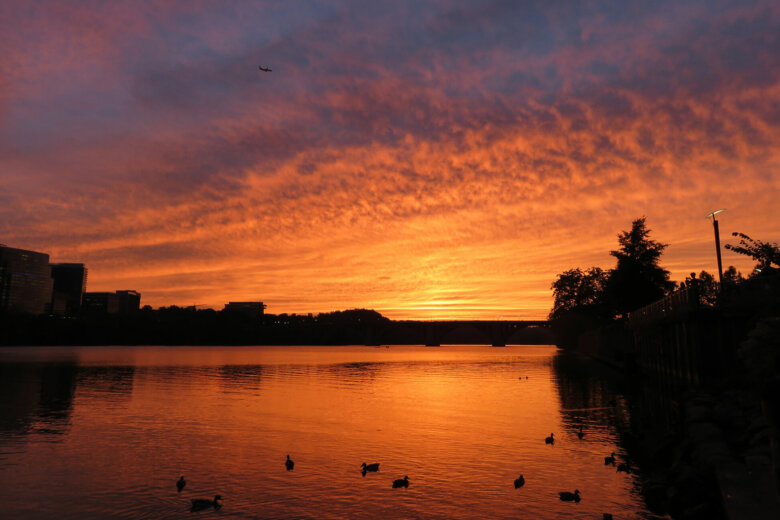
Anyone who has endured summer heat and humidity in and around the nation’s capital knows that where you are standing or sitting can make a large difference in your comfort level.
On Thursday, a dozen colleges and universities across Virginia will collect data on heat and humidity in an effort to better understand where people are most at risk during extreme heat waves.
Marymount University faculty, staff, students and community volunteers will take part in the Heat Watch project that aims “to better understand where the heat islands are in Arlington,” said Dr. Susan Agolini, assistant professor of biology at Marymount.
“Unfortunately, a lot of individuals who are already at high risk for health problems also live in areas where they’re more impacted by these heat disparities,” Agolini said. “When heat comes down from the sun, it’s reflected off buildings, pavement and concrete, so areas that are exposed will heat up a lot more, and you’ll feel the heat more.”
By contrast: “The greenery, the trees and green spaces actually absorb a lot of that heat, so you don’t feel as much heat in areas that have more trees and more green spaces,” she added. “If we can better manage that, you know it really plays a role in urban planning.”
The volunteers will use specially designed thermal sensors to record air temperatures and humidity throughout the state this Thursday.
“They’ll have devices that you attach to your car’s passenger side window, that will measure the temperature every second,” said Agolini. “Five driving routes will be driven three times during the day, at 6 a.m., 3 p.m. and 7 p.m.”
Agolini said this is the first year Marymount has participated in the heat mapping program, which was created by the National Oceanic and Atmospheric Administration.
The participating schools are within the Virginia Foundation for Independent Colleges. Previous VFIC collections in Richmond, Norfolk and Roanoke have revealed temperature differences as significant as 16 degrees between the coolest and hottest places.









